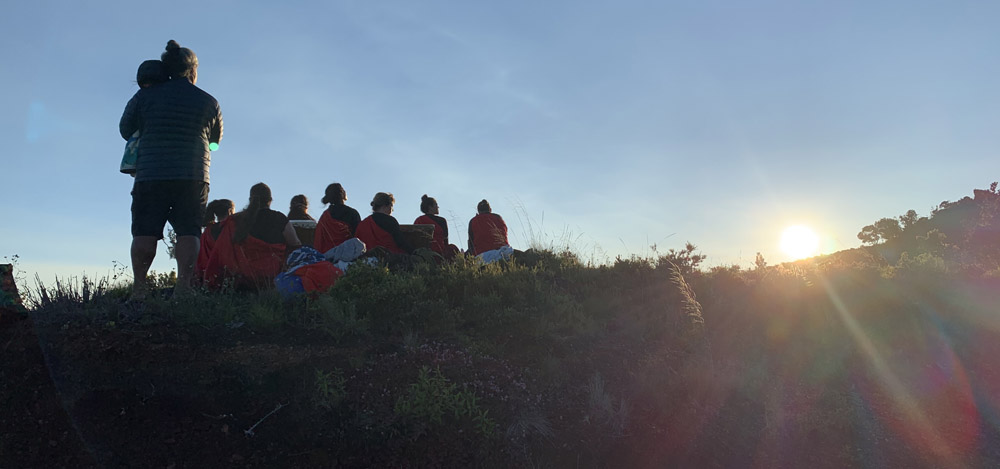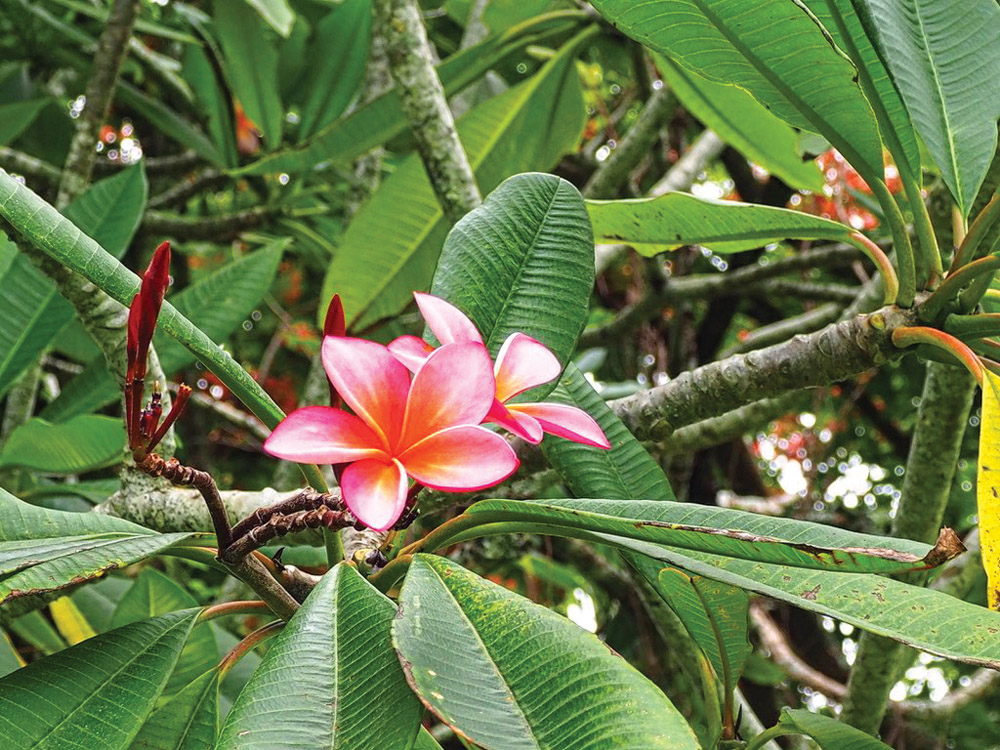
The Gift of Trees: Hilo Nursery Arboretum

By Brittany P. Anderson
In the heart of Hilo, between the old downtown and new city center, sits the Hilo Nursery Arboretum. As cars bustle along Kīlauea Avenue, a chicken shuttles her chicks to gather under the shade of one of more than 50 trees that populate the 19.4-acre property. The arboretum has a rich history in propagating ornamental and fruit-bearing trees and holds a torch for the legacy of providing for the community.
Roots of the Arboretum
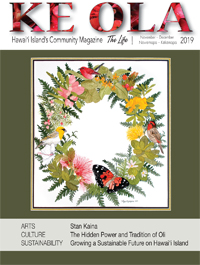
The Hilo arboretum was envisioned to be a nursery providing trees at low cost to landowners. It was through the work of Brother Mathias Newell and Charles S. Judd that brought the vision to life.
In August 1909, Brother Mathias Newell was appointed to establish a tree nursery in Hilo by the Territorial Board of Agriculture and Forestry. He was given a small stipend for supplies and compensation for his time.
Brother Mathias was an avid cataloger of species, having recorded specimens of birds and moths endemic to the islands in the 38 years he spent in Hawai‘i. Newell’s shearwater, or Hawaiian shearwater, (Puffinus newelli) is so named for his efforts.
The nursery proved successful as in the first year Brother Mathias distributed 3,500 trees to residents in Hilo and Hāmākua. Around this time, homesteading was booming across the island—there was a great demand for fruit and timber trees—while there was also a curiosity about what could grow in the range of Hawai‘i Island’s climates.
Charles S. Judd’s interest in testing exotic trees on Hawai‘i Island led him to Brother Mathias. Charles was the Territory of Hawai‘i superintendent of forestry from 1915 until his death in 1939. He was born and raised in Hawai‘i, and after graduating from the Yale School of Forestry, returned to direct the administration of the forest reserve program.
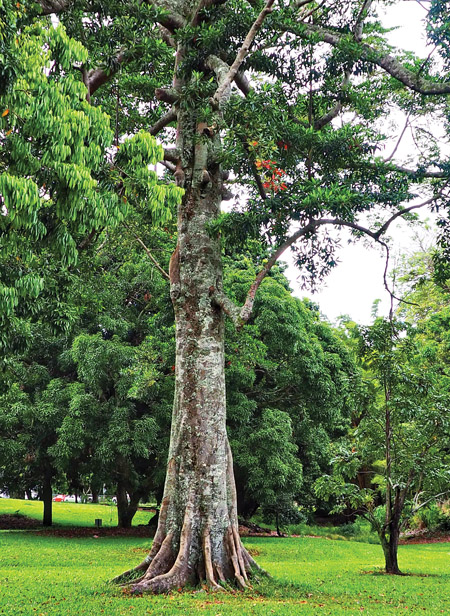
Although opposed to the development of commercial forestry, Charles actively promoted the importation and testing of many varieties of trees to determine those best suited to the Hawaiian Islands.
By the summer of 1920, it was decided to take an animal quarantine station, comprised of four acres, and use it for Brother Mathias’s expanding tree nursery. Importing trees from outer islands was illegal, increasing the demand for locally-grown trees even further. The construction of a new nursery building went underway, and the old pasture for the quarantine station was now used for plant propagation.
More than a thousand trees representing species from all over the world were planted at the new Hilo nursery. From there, they were grown and distributed throughout East Hawai‘i. In 1921 to 1922, nearly a half-million macadamia nut seedlings were distributed for planting on homesteads, ranches, and plantations up and down the Hāmākua Coast.
In addition to exotic imported trees, the Hilo Nursery grew and exported thousands of breadfruit cuttings. Things were rapidly changing at the nursery which meant a team needed to care for the operations. A home was built on the property by Henry Umuiwi. The house was for L.W. Bryan, the forestry superintendent and now agent in charge of the nursery.
Government leaders took note of the success of the Hilo nursery and resolved to dedicate the neighboring two and a half acres of sugarcane land, which had been reserved for a park site, to the nursery for the formation of a botanical garden. This endeavor would make Hilo a leader amongst the islands.
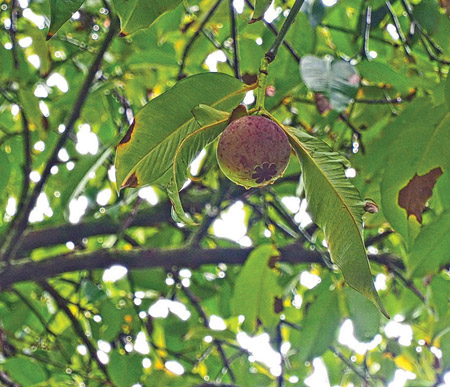
The arboretum again increased in 1925 with the addition of land on the east corner of Lanikaula Street and Kīlauea Avenue. By 1935 the nursery and arboretum had a total of 30 acres with over 700 different specimens.
From the thousand species planted by Brother Mathias and Charles, about 50 specimens remained. In 1964, the State Tree Nursery was established in Waimea, and as a result, nursery operations slowed in Hilo. Close to 10 acres of the arboretum were returned to the State and then sold off as homesites. At this time, many of the plants were lost. That same year the arboretum became an official public park. Now, only a small number of trees are produced in Hilo for reforestation projects and Arbor Day sales.
Though no formal tours are given, the community is welcome to explore the arboretum at no cost. Visitors are required to check in at the office, accessed on East Kawili Street, between 7:30am and 3:30pm. Here you can receive a numbered list with plant names that correspond to the number tagged on the plant.
Show of Diversity
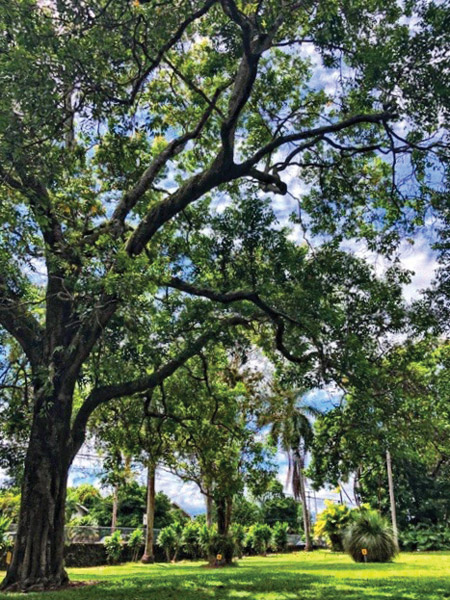
Ornamental and fruit trees dot the landscape within the Hilo Nursery Arboretum showcasing both exotic and common plants that grow on Hawai‘i Island. The expanse of the landscape is highlighted by broad lawns, where the trees are placed strategically in exhibition. A leisurely stroll through the property is a journey of the senses.
A giant cinnamon tree (Cinnamomum zeylanicum) greets visitors at the entrance to the arboretum. The cinnamon tree is used to make the common household spice cinnamon. Cinnamon in powdered and stick form are derived from the inner bark of the tree. To get a whiff of the spice, pick up a branch for a real-life scratch-and-sniff.
One of the more fascinating specimens is a towering ivory nut palm (Phytelephas). The species can grow up to 65 feet tall and are indigenous to Central and South America from Panama to Peru. The palm’s fruit is otherworldly, shaped like giant teardrops, and covered in scales. Inside the scaled covering is a nut that, when dried out, can be carved just like elephant ivory. The prehistoric-looking fruit hangs overhead, and if you’re lucky, you can find one on the ground surrounding the tree.
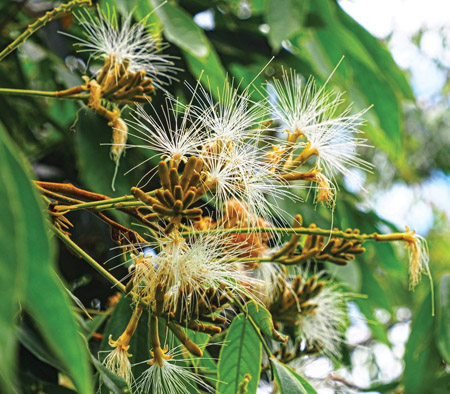
Timber trees like the Honduran mahogany, pheasantwood, and Queensland maple are interspersed among the fruit trees. Sturdy and practical, these are a few excellent examples of sustainable lumber grown on the island. Pheasantwood is particularly interesting because it can be harvested after 20 years, which is much sooner than other hardwood trees. Its timber is prized for the tightly striped grain that looks similar to the pheasant’s tail feathers.
A cluster of manicured mangosteen stand at attention in perfect rows, demonstrating a plantation-style orchard, a stark contrast to the surrounding scenery. Several varieties of avocado and citrus punctuate the arboretum as the soft hills and swales roll along. In the understory of ornamentals, several cacao trees proudly display their ice-blue pods.
Showy pops of color are offered by pretty magenta and yellow plumeria, and fragrant gardenias are surprising additions amongst the greenery. The arboretum takes on different appearances as the seasons change, so repeat visits are the best way to appreciate the extensive collection.
A Place for Everyone
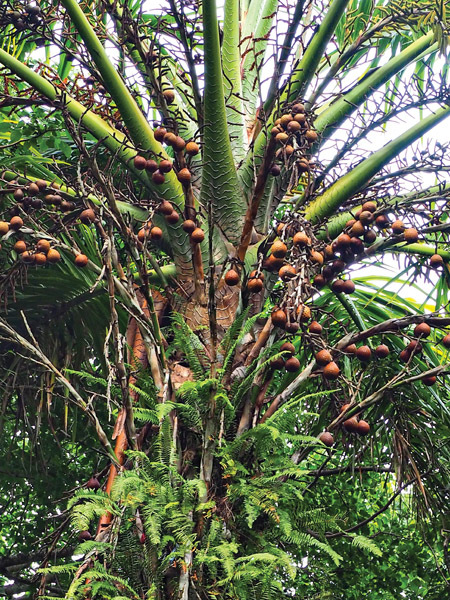
The community is welcome to enjoy the Hilo Nursery Arboretum as a place to eat, relax, and learn.
Alva Johnson, a resident of Pāhoa, enjoys the park-like setting, “It’s a great place to take my son for a picnic. Even better when fruit is in season to add to the menu.” Currently, the arboretum is home to more than 20 fruit-bearing trees, including abiu, mangosteen, and lychee. The public is welcome to pick fruit after checking in for permission at the arboretum office. Each person is allowed to pick one grocery bag worth of fruit per day, and climbing trees is strictly prohibited.
There is a sense of tranquility in the arboretum, a stillness only broken by the random foraging chicken. So few people frequent the groves of Hilo Nursery Arboretum that it maintains a secluded, peaceful feeling while still being located off a major Hilo thoroughfare. The rock wall separating the arboretum from the street, built from stones found during tree planting almost 100 years ago, adds to the feeling of being removed from the busy Hilo town just outside its border.
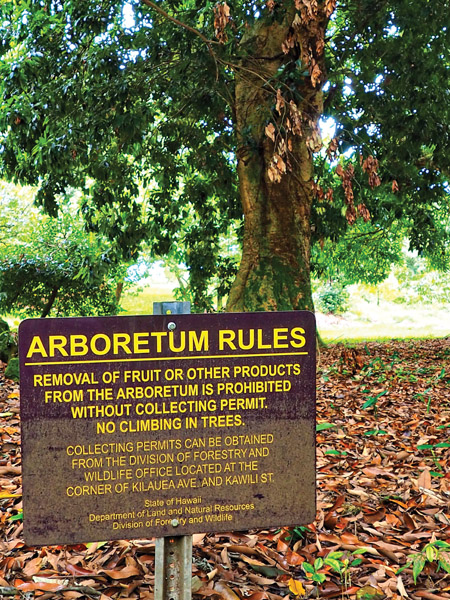
The occasional school field trip stops by the arboretum. Children learn about the seeds and trees, and run along the grassy hills between the plantings. College classes drop in for a lecture under the shade, and a painting class might draw on the inspiration for landscapes. Local fruit growers and plant aficionados will often forage for seeds, taking their spoils home to try their hand at propagation. Whether you are a plant enthusiast or youʻre looking for a place to take a stroll, the Hilo arboretum is a beautiful place to spend time.
As late afternoon turns to early evening, a mother hen scratches the leaves under a mango tree, foraging dinner for her chicks. People driving home from work sit in traffic on Kīlauea Avenue, occasionally glancing over at the trees within the Hilo Nursery Arboretum. The legacy of Brother Mathias, while buried in history, lives on from every stone stacked in the arboretum wall to each tree represented on the grounds. New trees are added frequently, continuing the collection of ornamentals and food-bearing plants found on Hawai‘i Island for future generations to enjoy. ❖
For more information: 808.974.4221

